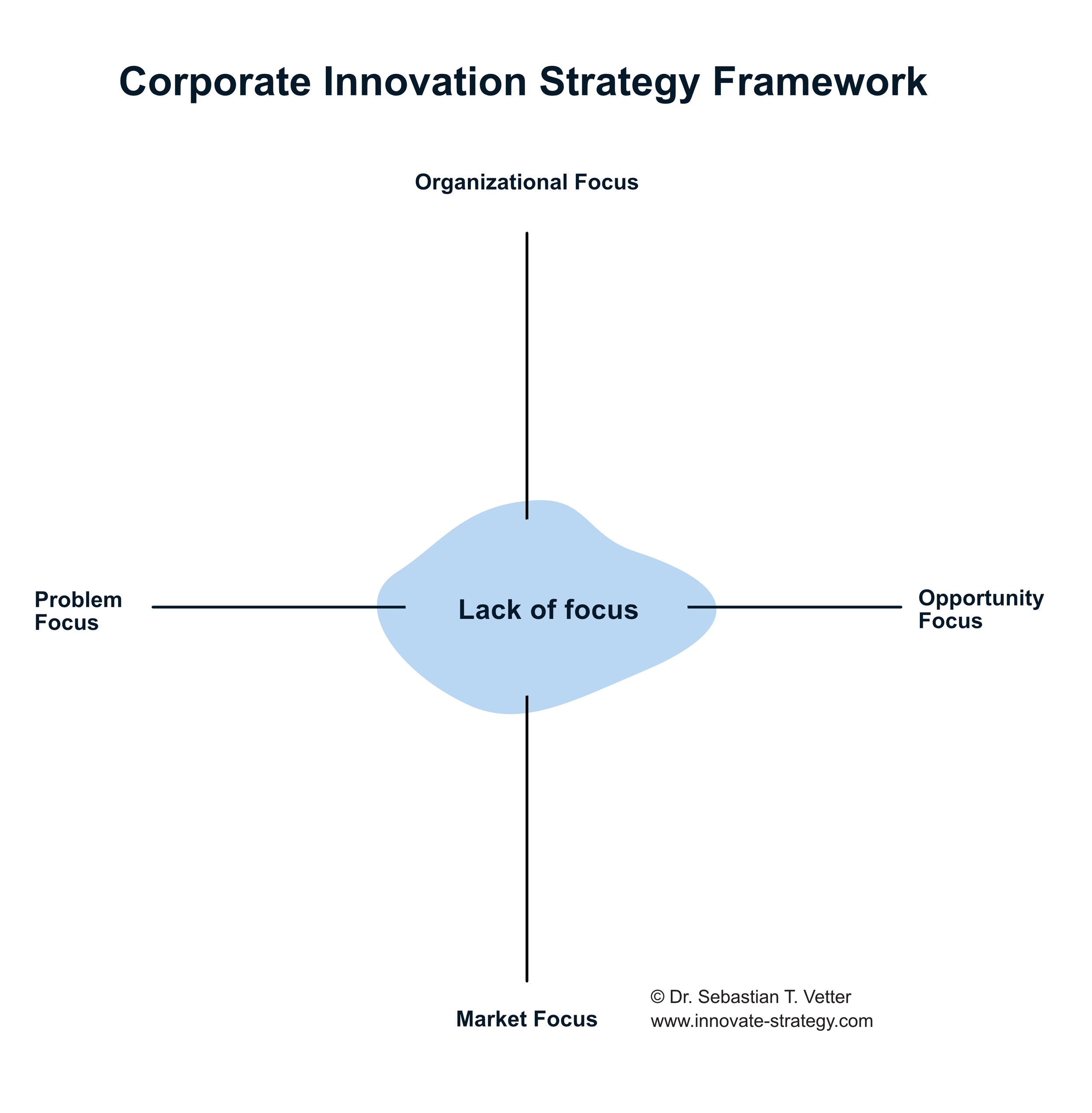In a previous article, I have outlined the specifics of a framework I’ve developed for defining innovation initiatives. In short, the framework differentiates corporate innovation initiatives by focus area (internal vs external) and innovation creation (problem-focused vs opportunity-driven). The resulting 4 quadrants can be labelled as optimise, improve, create, and reinvent. This follow-up blog post focuses on the right team setup, budgeting strategies and return on investment (roi) for each quadrant.
Practical Tips for Innovation Management within each Quadrant
When you’re positioned in the optimize quadrant your goal is to improve the way the organisation operates. You want to streamline processes and improve value creation. A two-pizza sized team does best, success criteria are easy to determine as you can refer to the current status quo as a baseline measure. In order to optimize existing processes of value creation you need people with deep process expertise and you need experienced facilitators and method experts who can manage team dynamics and support a productive working environment. From a budgeting point of view these teams cost mainly time and they should be able to quickly create efficiency gains that are higher than their cumulative costs.
In the bottom-left quadrant your goal is to provide a great customer experience and to improve existing products and services. Here the two-pizza rule applies as well. Conducting customer interviews and making sense of qualitative data is something most organisations don’t do on a regular basis. If you don’t have the skills in-house you might want to hire experts who can support you. The Return On Investment (ROI) can be easy to measure for example in the form of a higher customer acquisition rate due to an improved sign-up process. The ROI can also manifest itself in behaviour that is not directly visible and therefore more difficult to assess. Think of a product improvement that leads to customers not switching to a competitors’ product.
Investing in a seamless customer experience pays off most of the time. You might also get beneficial carry-over effect for example from a reduced number of calls to the contact centre (costs-to-serve) due to an intuitive user experience.
Positioned in the create quadrant, your focus is on creating innovative products and new services that will drive future revenue. In order to do so you will need people with a unique mind- and skillset. You want people who can imagine something that does not exist yet. Here I deviate from the two-pizza rule as smaller teams usually do a better job. A team of 3 to 5, not necessarily industry experts, is best suited to create future business opportunities. Don’t think ROI here, most of the future product or service ideas will not make it to the market. You simply can’t get the winners without investing in the losers. Also it could take years until a new product or service creates revenue. Hacking Industry Conventions and Cultural Beliefs and Innovation through a shift in meaning are your methods of choice.
The reinvent quadrant is your innovation masterclass. Your team has the mandate to reinvent the core business and come up with new business models that can disrupt whole industries. Here you want to work with people who can leave the boundaries of what is considered normal. You need unconventional thinkers who are not only able to challenge but to reinvent the status quo. Keep the group small and don’t hire for industry expertise as it often comes with being conditioned to a certain way of thinking. The dominant industry beliefs can be the biggest barrier to disruption. Regarding budget and ROI, if you decide to operate in this field you will need to write the investment off. Don’t expect any return on investment and see it as an experiment. If you know it’s going to work it’s not an experiment. If this scares you, remember that you do not have to operate in this quadrant – in fact many organizations don’t. That’s okay but keep in mind that there are companies out there who are doing exactly this – trying to put you out of business or even changing your whole industry. If you don’t reinvent your own business or industry someone else might.
Don’t get stuck in the middle
You might have wondered what the area in the centre of the framework stands for. This is where you don’t want to be. It’s the danger zone of no focus. Trying to do everything for everyone, applying new methods because they are fashionable, and constantly shifting focus between business needs and customer needs and between problem solving and innovating. This is tiring to everyone in your team and hardly successful.
More details on the framework for managing corporate innovation initiatives can be found here.
Check www.innovate-strategy.com for more information and get in touch sebastian@innovate-strategy.com.
Posted by Dr. Sebastian Vetter







